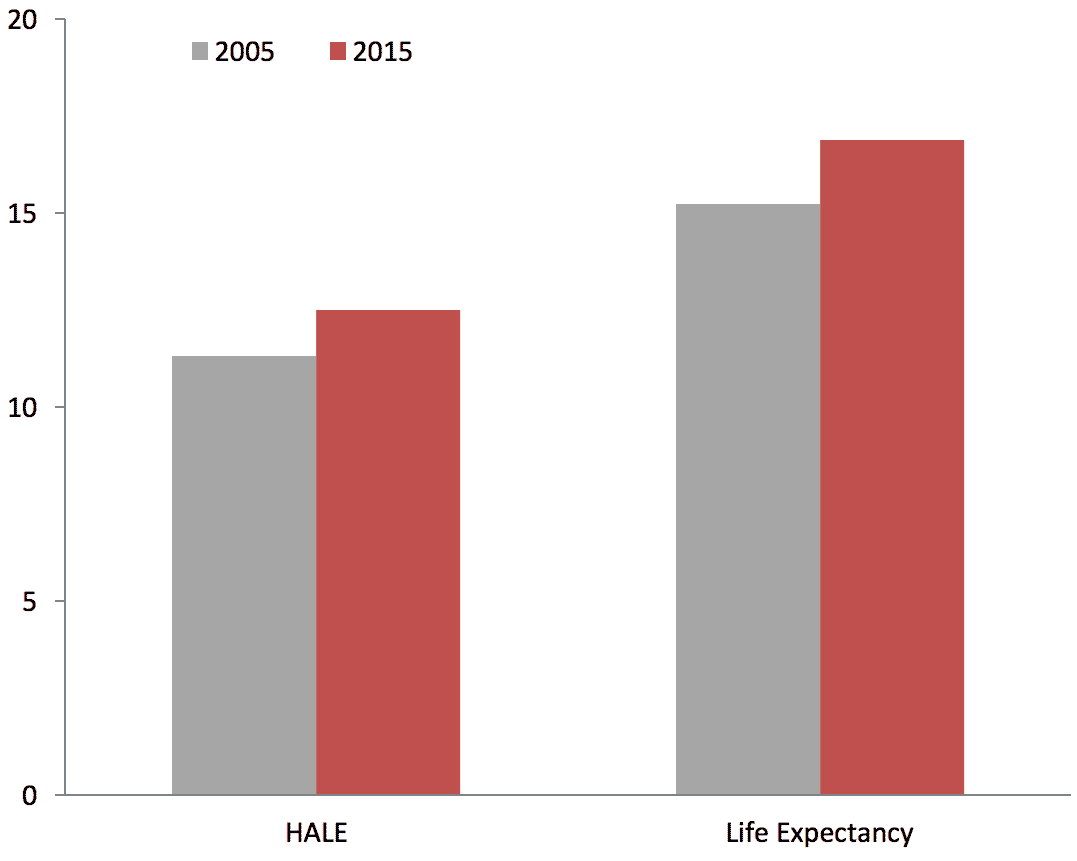With just 5 percent of its population currently age 65 and older, South Africa is the youngest of the countries included in this study and has yet to start aging. Thanks to a consistently high fertility rate, the share of the older population is growing at a much slower pace than other upper-middle-income countries. This lack of demographic pressure has given the government little incentive to prioritize aging-related issues on its policy agenda. Instead, it is focused on broader societal challenges – including poverty, crime and racial disparity – to which older people are particularly vulnerable.
With a focus on the alleviation of old-age poverty, enabling the development of productive skills for older adults has not been a priority of the South African government. Virtually no steps have been taken to increase their labor force participation rate or to provide training programs beyond literacy. There are also very few efforts specifically targeting seniors to help them obtain the knowledge to utilize basic forms of technology. However, in 2016 the government introduced a long-term strategy to improve accessibility to basic technologies for those who historically have been unable to acquire it, including older adults. Accessibility has also been an issue for older South Africans seeking both medical and long-term care. The government is attempting to address the health-related issues experienced by the older population through a comprehensive, large-scale reform of the whole system set for implementation by 2030, which will include prioritizing older adults at the primary care level.
Number and Share of Population Age 65 or Older
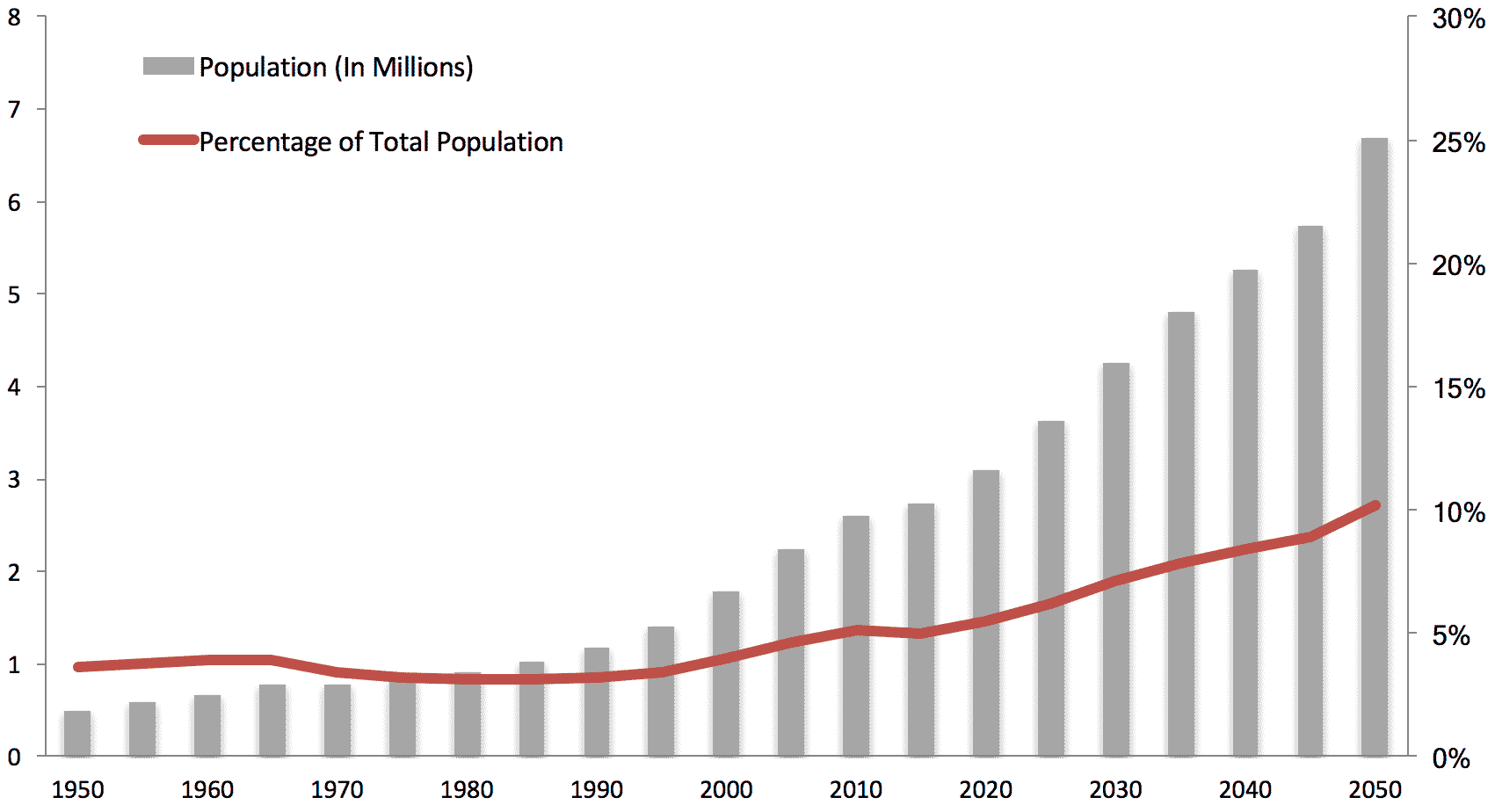
Today, South Africa’s population age 65 and older is equivalent to just one-sixth of the population ages 0 through 14. The percentage of the older population is projected to just double to reach 10.2 percent of the total population by 2050 – a pace of change about one-third slower than other upper-middle-income countries.
Source: OECD, World Bank, UN Population Division

Community Social Infrastructure
South Africa is struggling to provide community support to older people nationwide, particularly in rural areas. Families remain an important system of support for older adults, the majority of whom live in households composed of extended family members, though the share of older people living alone has increased significantly in the past decade. Due to a lack of national resources and other urgent issues, the government has focused on improving physical infrastructure in housing and transportation, and it has operated indirectly through NGOs to improve community support services.
The Association for the Aged (TAFTA)
Today, there are over 60 registered NGOs around South Africa dedicated to assisting older adults. One of the most active NGOs is the Association for the Aged (TAFTA), which operates primarily in KwaZulu-Natal (KZN), the province with one of the highest shares of people age 60 and older in the country (19 percent). The organization provides a variety of support services, including a “meals on wheels” program that serves an average of one million meals each year. As population aging has progressed, and demand has increased, TAFTA has begun to expand the scope of services. It launched a program called “Ageing in Place” in 2013, which is designed to enable older adults in the region to live in their homes for as long as possible by offering services, including handymen to fix household issues; “care companions” to assist with errands; telephone check-ins; and 24/7 emergency response. TAFTA provides its services to an average of 5,500 older people each month. While these initiatives are successful for those who have access to them, much more government and non-government support will be required to meet the needs of the country’s older population.
Composition of Elderly-Headed Households
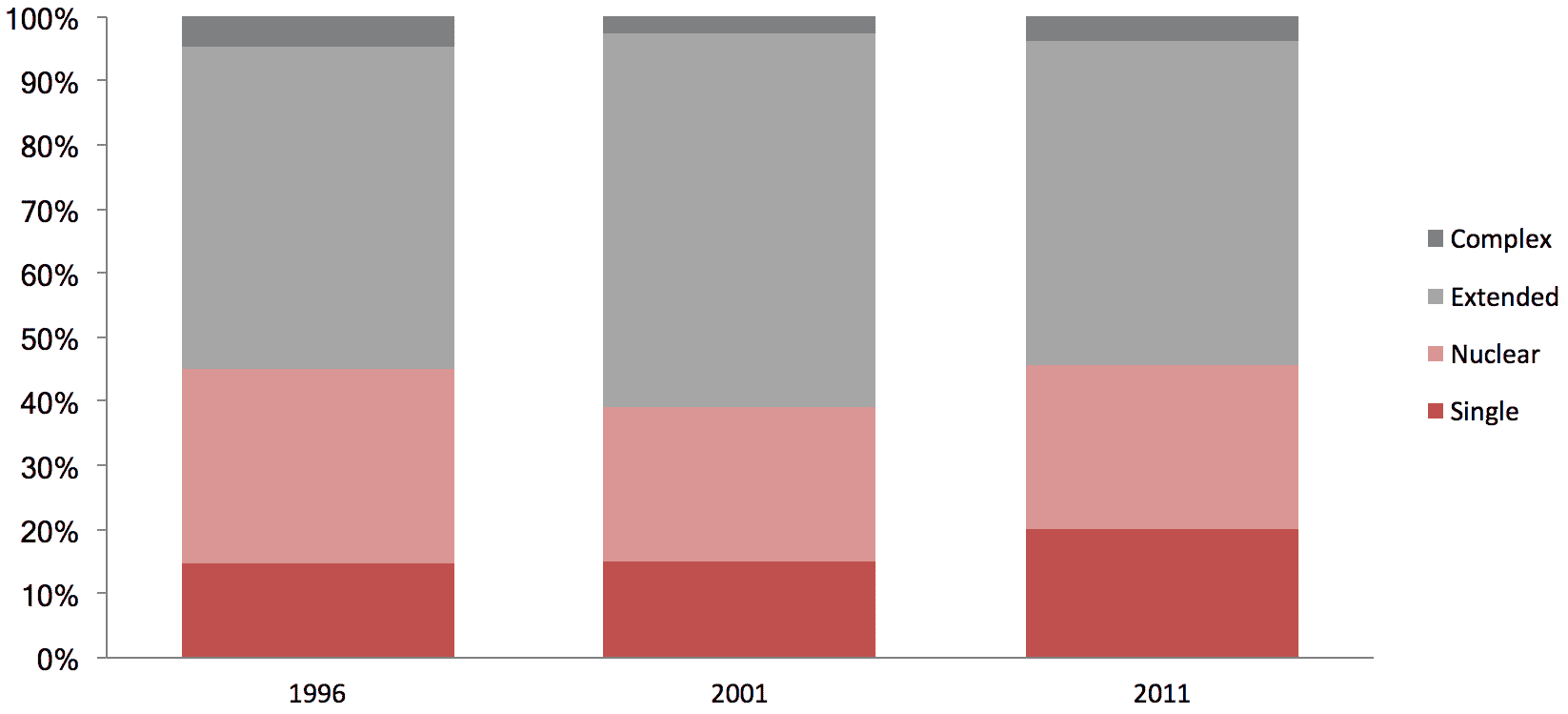
The tradition of multigenerational households remains strong in South Africa, with 50.6 percent of all people age 60 and older living in extended households as of 2011. However, the share of older adults living alone increased from 14.6 percent in 1996 to 20.2 percent in 2011.
Source: Statistics South Africa
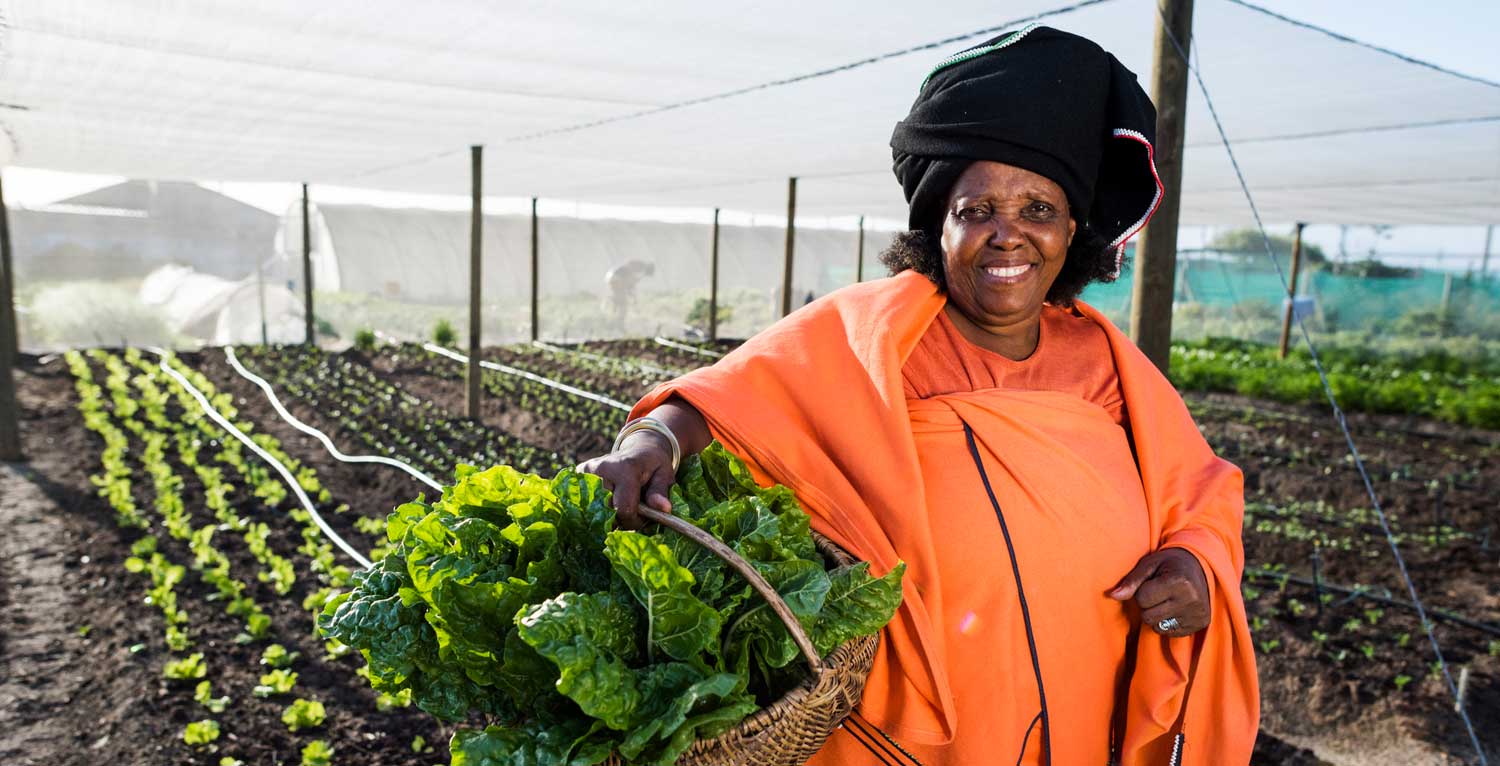
Productive Opportunity
Older adults in South Africa participate in the labor force at very low levels largely due to the provision of a non-contributory pension. Since the early 1900s, the Old Age Grant, which serves as South Africa’s only nationwide public pension scheme, has been available to adults age 60 and older who pass a means test. It is received by the overwhelming majority of the older population.
The labor force participation rate for South Africans age 65 and older was only 6.6 percent in 2015 – the second lowest among countries covered in this study, less than half of the OECD average, and only around one-third of those of Brazil and China.
“Older adults receiving the social pension are not likely to keep their job once reaching the pensionable age, especially those in low-paying jobs. It is traditional for older people working in urban areas to move back to a rural area once they reach the age of 60, where the cost of living is lower.”
– Morne Oosthuizen, Deputy Director of the Development Policy Research Unit UCT
Education is an area where South Africa’s racial inequality remains significant, and is another barrier to economic engagement by older South Africans. While educational attainment is quite high among the older white population, the majority older black population is still feeling the effects of the discrimination imposed by Apartheid laws. South Africa’s education system has undergone significant reforms, but while the government has endeavored to improve literacy and education of the entire population, it has neglected the productive opportunity among the older population and has yet to provide them with assistance gaining skills and employment.
Educational Attainment of People Age 60 and Older by Race
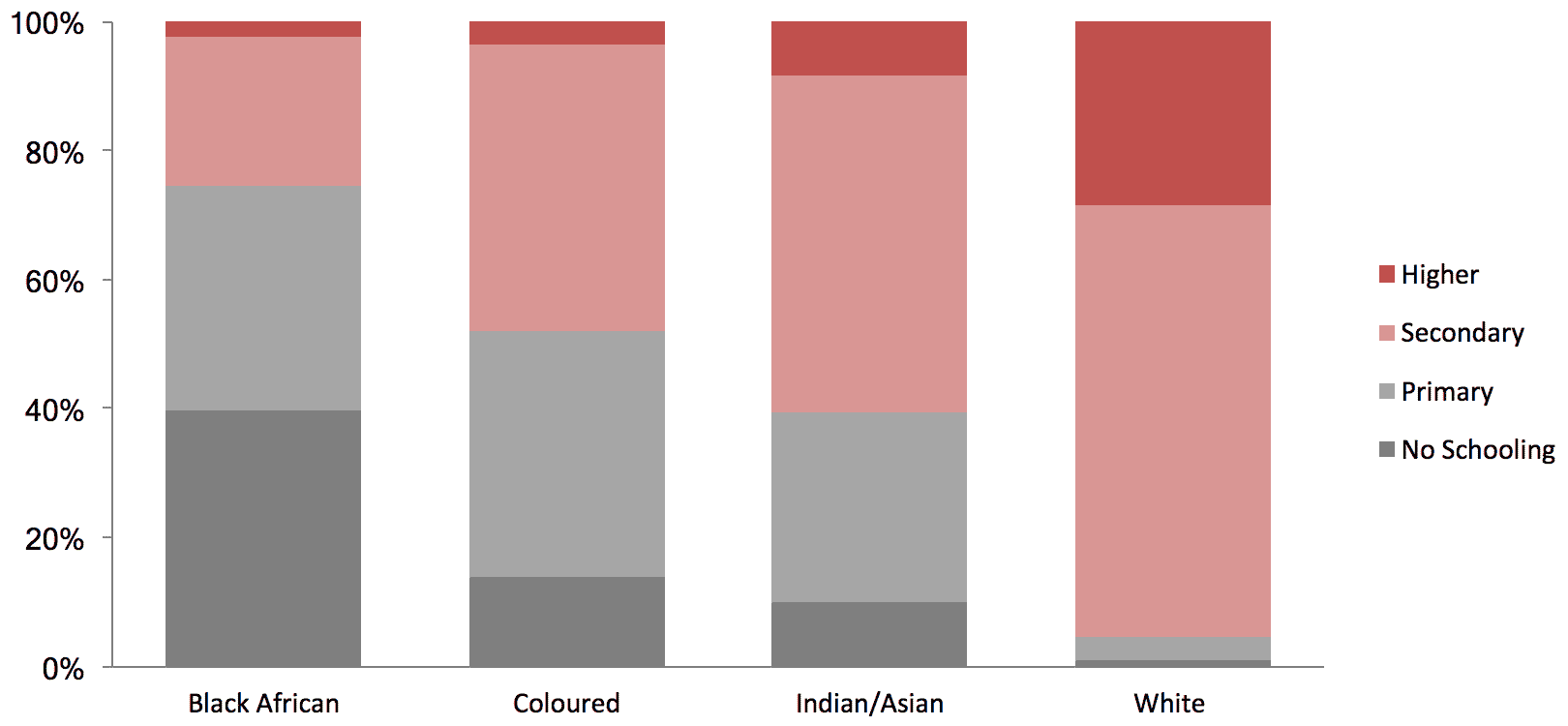
While 96 percent of white South Africans age 60 and older had attained secondary or a higher level of education as of 2011, only one-quarter of older black South Africans had done the same. While only 1 percent of older white people had never received schooling, the rate among older black adults was nearly 40 percent.
Source: Statistics South Africa
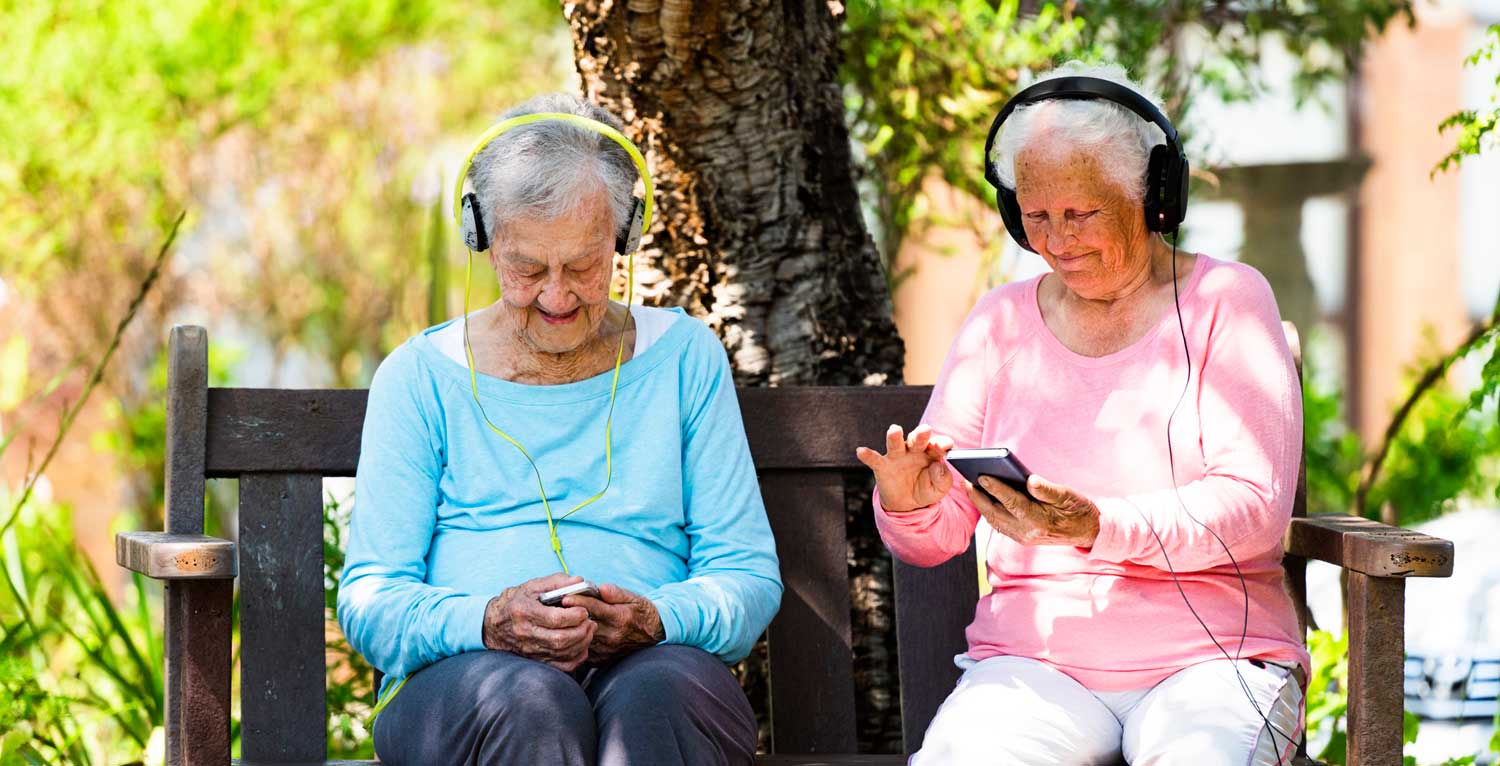
Technological Engagement
Older people in South Africa are engaging with basic technologies at higher rates than ever before, but there is still a significant digital divide. Much like in education, government efforts have been long-term endeavors geared toward the entire population, without a focus on older adults. The primary emphasis has been on technology diffusion by increasing infrastructure accessibility. While Internet penetration among older people remains low, they have begun to engage with mobile technology at much higher rates in recent years. Some local companies have begun to adapt mobile technology to the needs of older consumers, but the lack of widely available training limits uptake.
Share of Internet Users by Age (% of Total)
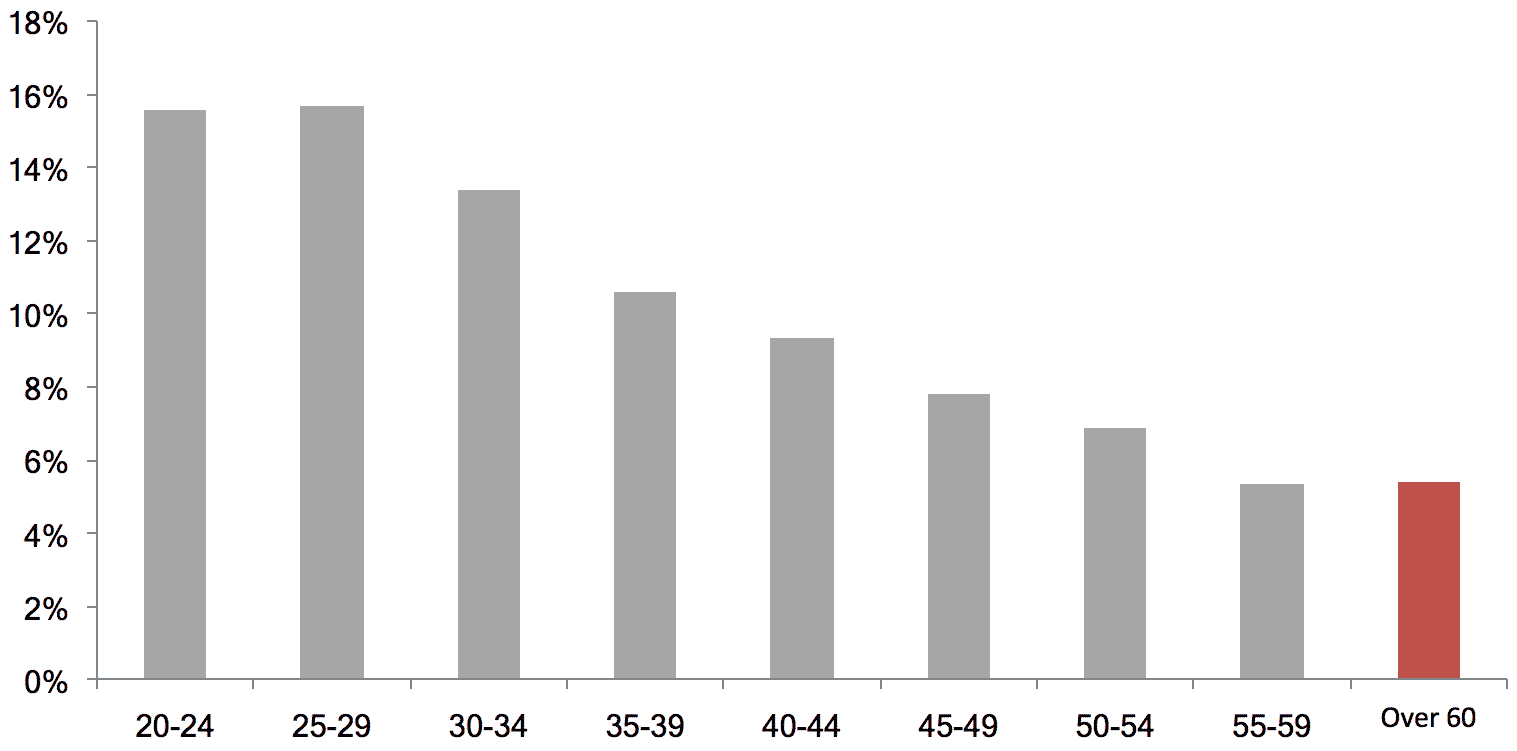
As of 2016, 48.7 percent of all households in South Africa had access to the Internet, and only 5.4 percent of all Internet users were 60 years or older – below their share of the total population, which stands at 8 percent.
Source: Effective Measure
Vodacom Initiative
Some larger companies have designed devices specifically for older people. Vodacom has been working to help older adults in South Africa transition technologically along with the rest of the population. The company recently released a phone called the Vodfone V155, specifically designed for older customers experiencing vision loss and for those with limited hand functionality. Some of its features include a big-button keypad, general compatibility with hearing aids, a noise-cancellation feature, a voice-reminder feature, and an SOS key alert function. Additionally, the company has set up the Disabled and Elderly Specific Needs Strategy for Vodacom South Africa and has recruited staff who are responsible for setting up kiosks at various organizations for the disabled, making these older-adult- and disabled-specific products more accessible to them.
Healthcare & Wellness
Life expectancy and healthy life expectancy for older adults have both improved in the last decade in South Africa, although they are still lower than both the regional and global averages. The government has made reforming the healthcare system its primary focus in order to provide the entire population with better-quality healthcare, but there are still very limited resources available for long-term care (LTC). In order to make up for this, some NGOs have begun to provide health and LTC services for older people in the provinces and municipalities in which they operate, as well as transportation services so that they have easier access to medical facilities.
In South Africa today, there is a nationwide total of just 13 registered geriatricians to serve the older adult population, and most of them work in the private sector.
Healthcare System Reform
The South African government has been working since 2012 on an ambitious healthcare system reform that aims to establish National Health Insurance (NHI), a health-financing system that would provide universal healthcare to all South Africans by combining public and private healthcare resources into a single healthcare scheme. Pooling resources in this way is intended to improve coverage quality by including access to preventative and curative care for all South Africans, and to improve affordability by financing through mandatory prepayment rather than out-of-pocket payments and co-payments. As a part of the NHI implementation, the Department of Health is working to re-engineer its primary care policy to provide priority treatment to older adults in primary care facilities. The final phase of the plan is expected to produce results by 2030.
Life Expectancy and Healthy Life Expectancy at Age 60-64 (As of 2015; in Years)
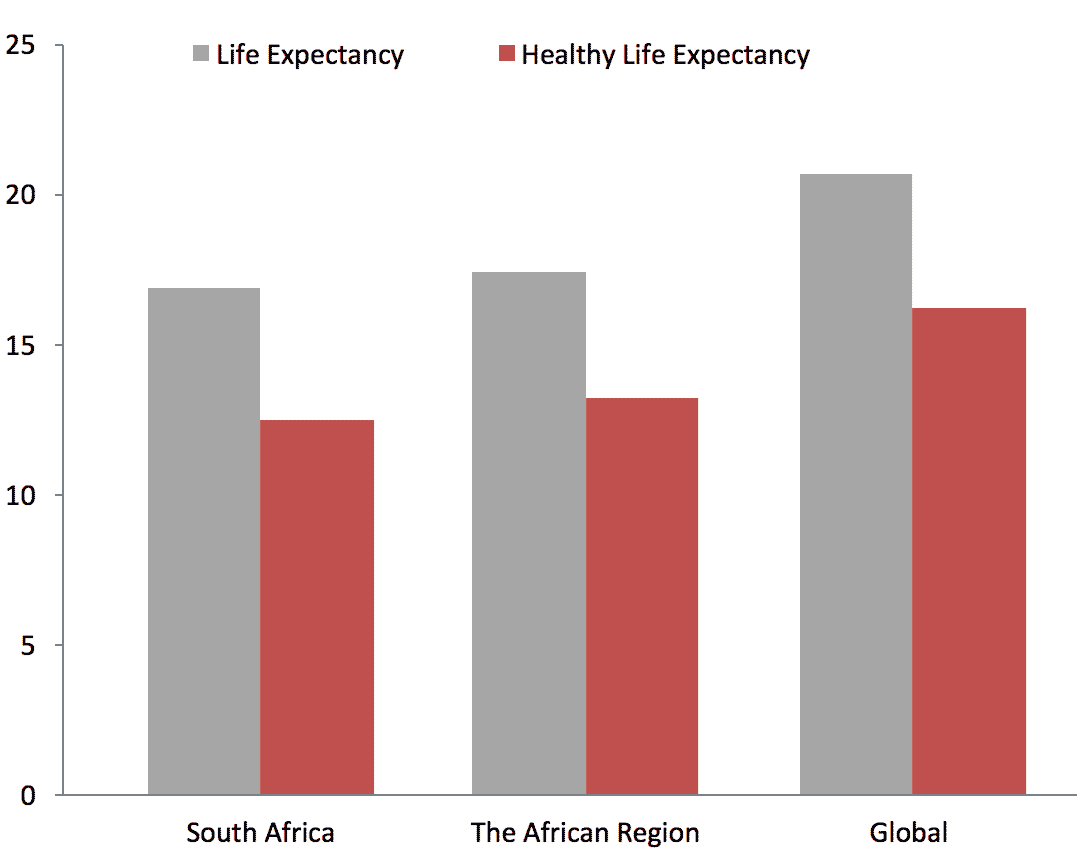
Life Expectancy and Healthy Life Expectancy at Age 60-64 (2005 vs. 2015; in Years)
